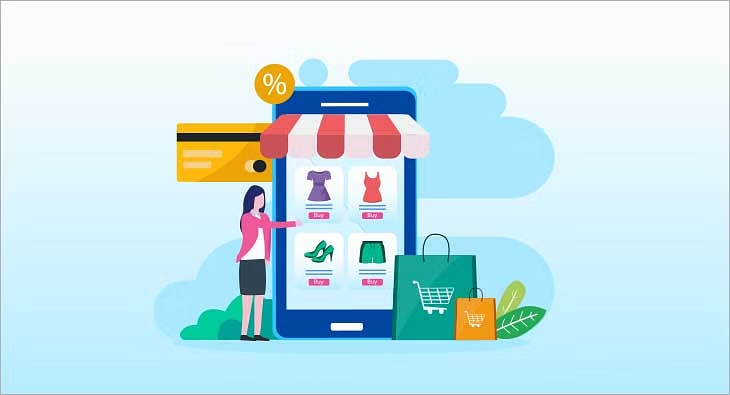Digital advertising technology, also called AdTech, has completely changed how businesses connect with and involve customers. Traditionally, Tier 1 cities have been the main target for many advertisers. However, Tier 2 cities are now becoming important markets too because they show great growth potential. These smaller but fast-growing cities give special chances for brands to grow their audience. Here are good AdTech strategies for doing well in Tier 2 cities.
Understanding Tier 2 Cities
Tier 2 cities, usually known for their increasing population, improving infrastructure, and growing middle-class people, are often viewed as the new area of opportunity for digital advertising. Unlike Tier 1 cities that already have many ads everywhere, Tier 2 cities offer a market with fewer ads. This helps brands to be more noticeable easily. Knowing the local culture, likes and dislikes, and online habits is essential for creating good AdTech plans in these places.
Mobile-First Approach in Tier 2 Cities
One very important thing about AdTech in Tier 2 cities is seeing how common mobile devices are. Many people living there might not use desktop computers at all and depend a lot on smartphones to connect to the internet. Therefore, adopting a mobile-first strategy is essential. This includes:
- Responsive Design: Making sure all digital content like websites and advertisements works well on mobile phones and tablets.
- Advertise in Apps: Use well-known local apps to place ads inside them, which can provide more focused and interesting ad experiences.
- SMS and Push Notifications: Using SMS messages and app notifications to send personalized offers and important information directly to users.
Localized Content
Localization is very important for making connections with people in Tier 2 cities. This involves more than just changing the content into their language; it also means adapting the messages to fit local traditions, customs, and values. Brands that do a good job of making their content fit local markets can make stronger connections and get more loyal customers. Some ways to do this include:
- Ads in Local Language: Making ads using the local language so people understand and connect better with it.
- Cultural Relevance: Including local celebrations, events, and cultural details in marketing plans to connect better with the people.
- Influencer Partnerships: Working together with local influencers who have a large number of followers in Tier 2 cities to spread the brand message genuinely.
Programmatic Advertising: Efficient in Tier 2 Cities?
Programmatic advertising automates the process of buying and selling digital ad spaces, making it very efficient in Tier 2 cities. This method allows advertisers to target audiences more accurately by looking at their demographics, behaviors, and interests. Key benefits include:
- Cost Efficiency: Programmatic ads might save more money and give better returns because they aim at the right people at the perfect moment.
- Scalability: The ability to grow campaigns fast and smoothly on many platforms and channels.
- Real-Time Optimization: Constantly adjusting ad campaigns while they run to make them work better and engage more people.
Social Media Engagement
Social media use is very common in Tier 2 cities, so platforms like Facebook, Instagram, and local networks are important for AdTech plans. Brands should pay attention to:
- Interactive Content: Making fun things like polls, quizzes, and contests to get people involved and make more people know about the brand.
- Community Building: Making a strong presence on social media by joining and taking part in local online communities and groups actively.
- User-Made Content: Asking users to make and share things about the brand, can help increase trust and seem more real.
Data-Driven Insights
Using data analytics is very important to understand what people in Tier 2 cities like and how they behave. By studying this data, brands can:
- Make Marketing Personal: Give ads and suggestions tailored to the user by using their data, so they feel more relevant and interesting.
- Track Performance: Monitor the effectiveness of ad campaigns and adjust strategies accordingly.
- Recognize Trends: Understand new trends and what consumers in Tier 2 cities need to stay competitive.
Omnichannel Presence
An omnichannel way makes sure customers have a smooth and same experience at different places. For Tier 2 cities, this means joining online and offline ways together to make one brand story. Strategies include:
- Consistent Messaging: Keeping the same branding and communication on every place such as social media, websites, and real stores that people visit.
- Cross-Channel Promotions: Doing campaigns that mix both digital and traditional media. For example, putting online ads together with local newspapers or radio spots.
- Unified Customer Experience: Making sure all customer interactions are seamless and consistent, no matter if they contact the brand through the internet or in person.
Conclusion

Tier 2 cities give many chances for brands wanting to grow using AdTech. By focusing on mobile first, making content local, using programmatic ads, connecting through social media, applying data-driven ideas, and keeping a strong presence across channels, companies can successfully enter these developing markets. Using these methods will help not just in getting noticed by people living in Tier 2 cities. It will also help in making strong and long-term connections with them.
Frequently Asked Questions on AdTech in Tier 2 Cities
1. What are Tier 2 cities?
Tier 2 cities are smaller, rapidly developing urban areas with growing populations and expanding infrastructure. They are characterized by a rising middle class and increased economic activity, making them particularly attractive markets for businesses.
2. Why is a mobile-first approach important for AdTech in Tier 2 cities?
In Tier 2 cities, many residents rely heavily on smartphones for internet access, often skipping desktop usage. A mobile-first approach ensures that digital content and advertisements are optimized for mobile devices, thus enhancing user experience and engagement.
3. How can localization improve AdTech campaigns in Tier 2 cities?
Localization involves tailoring content to reflect local languages, customs, and also values. This helps brands connect with the audience on a personal level, therefore making advertisements more relatable and effective in building brand loyalty.
4. What role does data analytics play in AdTech strategies for Tier 2 cities?
Data analytics allows brands to understand consumer preferences as well as behaviors in Tier 2 cities. By leveraging this data, businesses can personalize marketing efforts, optimize ad performance, and identify emerging trends, thus ensuring more targeted and successful campaigns.


